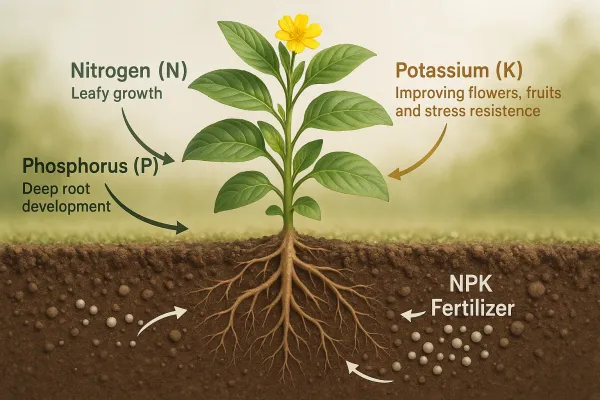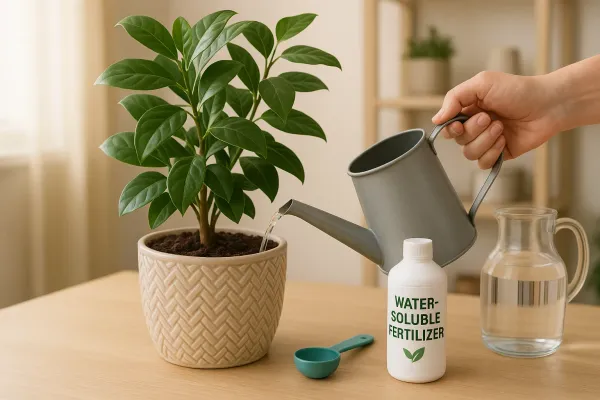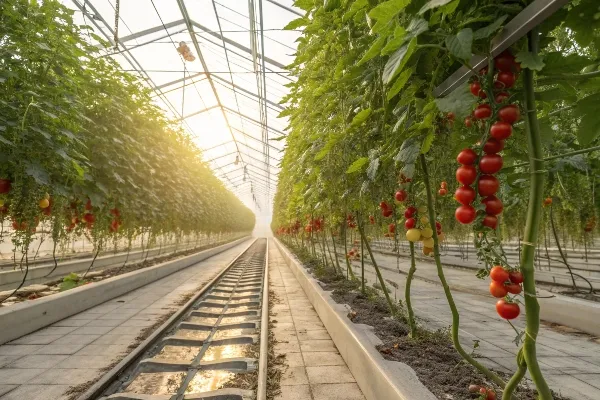Avoid your inquiry is delay response, please enter your WhatsApp/Skype along with the message, so we can contact you at the very first time.
We will reply you within 24 hours. If for urgent case, please add WhatsApp/WeChat:
Warning: Undefined variable $public in /www/wwwroot/lvfertilizer.com/wp-content/themes/hyhadmin/header.php on line 350
Warning: Trying to access array offset on value of type null in /www/wwwroot/lvfertilizer.com/wp-content/themes/hyhadmin/header.php on line 350
,. Or call
Warning: Undefined variable $public in /www/wwwroot/lvfertilizer.com/wp-content/themes/hyhadmin/header.php on line 350
Warning: Trying to access array offset on value of type null in /www/wwwroot/lvfertilizer.com/wp-content/themes/hyhadmin/header.php on line 350
directly.
Plants stall when feeding is random. Underfeed and growth slows; overfeed and leaves burn. Here’s a clear schedule to use npk so nutrient timing matches what plants need.
In most cases, apply npk fertilizer every 4–6 weeks during the growing season, then fine-tune by soil test, crop growth stage, and the product’s npk ratio. For an indoor plant, feed lightly about monthly. Always water in and match the type of fertilizer to your soil conditions.
NPK fertilizer supplies three essential nutrients—nitrogen, phosphorus, and potassium—required by plants in larger amounts. Nitrogen drives leafy growth, phosphorus supports root development, and potassium improves flowering, fruit, and stress tolerance. A balanced fertilizer program keeps nutrient availability in the soil high, so nutrient uptake stays steady and efficient.
Read labels for the npk ratio (for example, 12-12-12). Choose a grade that matches the crop’s growth stage. As a producer, we also offer balanced choices such as a balanced NPK 12-12-12 compound fertilizer and a category overview of our NPK compound fertilizer series that helps you compare options before you apply fertilizers.

A simple rhythm for a home garden is feeding every 4–6 weeks with moderate rates. Field programs vary with irrigation, soil texture, and expected yield. The goal of npk application is to keep nutrient levels steady rather than spiking them.
Quick frequency guide
| Setting | Typical frequency (in season) | Notes |
|---|---|---|
| Home garden vegetables | Every 4–6 weeks | Split doses reduce loss and improve uptake. |
| Flowering plants & shrubs | Every 5–6 weeks (lighter) | Avoid heavy late N; keep K steady for flower and fruit. |
| Field vegetables | 2–4 split applications | Align each fertilizer application to growth stage. |
| Indoor plant containers | Monthly, diluted | Flush occasionally to prevent salt buildup. |
This pacing help plants without excess. It’s a practical fertilizer cadence many growers follow for optimal results.
To finish strongly, many growers pivot to a high-K grade like high-K NPK 12-10-30 for bloom and fruit quality. That small shift often improves color and shelf life while protecting overall plant performance.
Feed when roots are active and soil is moist—mornings or late afternoons in hot weather. Water in after each pass to support nutrient uptake. Sync application with plant growth milestones such as transplanting, pre-bloom, and early fruit set. The best fertilizer is the one you apply at the right time in the right dose.
“Little and often” usually beats “rare and heavy.” Too much fertilizer at once can lead to nutrient burn or leaching.
For an indoor plant, use a diluted liquid or water soluble fertilizer—about one-quarter to one-half strength—once per month while actively growing. Because containers have limited buffer, gentle rates and occasional flushing keep plant health steady. If you prefer fertigation, a versatile option is 20-20-20 TE water-soluble fertilizer for fertigation.

Start at label minimums and adjust with experience. Consider soil texture, rainfall/irrigation, and expected yield. Sandy soils benefit from more frequent, smaller splits. Heavy clays can handle fewer, well-timed passes.
Relative feeding demand (text chart)
Leafy greens ██████████ high N early
Tomatoes ████████ raise K as clusters set
Roses ███████ steady balanced nutrient program
Lawns █████████ frequent light N
Herbs ████ light feeder
To keep balanced nutrient supply, many gardeners feed lightly every 4-6 weeks during the growing peak, especially for crops that set multiple flushes.
A soil test helps determine the existing nutrient levels and pH, so you can pick the best fertilizer grade and dose. With nutrient levels and ph known, you avoid over- or under-feeding. This is especially important for plants grown intensively or in sandy soils. Even a basic test once a year can prevent nutrient deficiencies before they show.
If you need private-label blends or want to use npk fertilizer with region-specific grades, consider bulk blending (BB) fertilizer for private-label formulas. For quick nitrogen boosts early on, some programs use ammonium sulphate (quick nitrogen source).
As demand rises, avoid big single shots. Use split npk fertilizer application to match growth stage, weather, and soil. Sandy soils leach faster; clay soils hold more, so sessions can be fewer. If rainfall is heavy, consider an extra light top-up. This keeps plant growth and health on track and supports optimal growth and development.
Rule of thumb: feed every 4–6 weeks in season, then taper. That’s how many home garden growers ensure optimal plant response.
Greenhouse tomatoes (drip).
Begin balanced, then tilt to higher K as clusters set. Small daily fertigation shots stabilize nutrient supply and support abundant flowers and fruits. Many growers rely on a water-soluble like 20-20-20 TE water-soluble fertilizer for fertigation early, then switch to a higher-K formula later.

Roses in ornamental beds.
Spring start with a balanced fertilizer, then lighter rounds every five weeks. Consider a balanced grade such as a 12-12-12 (see balanced NPK 12-12-12 compound fertilizer) and shift to higher K during peak bloom.
Leafy greens (field).
Pre-plant N-P-K, then two side dressings. This keeps nutrient requirements met without waste. Distributors who manage multiple crops often stock several grades from our NPK compound fertilizer series to cover different plants efficiently.
Always follow label rates. If your question is “how often should i apply npk and how much?”, begin on the low end, then scale as you watch color and vigor. For container mixes, half-strength is safer. Remember, plants have varying nutrient requirements; what fits tomatoes may not fit herbs. Keep records so you can refine the frequency of npk and dose next season.
Mini checklist
| Growth stage | Suggested npk ratio focus | Timing rule (simple) | Why it works |
|---|---|---|---|
| Establishment / young plants | Balanced or slightly higher N | First 2–3 weeks | Builds leaf area and root development. |
| Pre-bloom vegetative | Balanced | Every 4–6 weeks | Keeps energy up for branching. |
| Bloom and fruit | Higher K, steady P | 4-6 weeks during the growing | Improves flavor, color, and finish. |
For flexible OEM programs, some partners use BB blends to stock one base and shift K as needed (see bulk blending (BB) fertilizer for private-label formulas).
How often to apply NPK if I’m new to gardening?
If you’re unsure, feed every 4–6 weeks during the growing season with a balanced fertilizer, water in, and watch leaf color. Adjust next time if growth seems slow.
Is there a “best npk” grade for all crops?
No single best fits everything. Choose by understanding npk needs: more nitrogen early, more potassium at bloom/finish, and enough phosphorus for roots. For a flexible all-rounder, many start with a balanced compound, then switch to a finishing grade like high-K NPK 12-10-30 for bloom and fruit quality.
Can I use npk in fertigation?
Yes—water-soluble grades make it easy to use npk little and often. A widely used option is 20-20-20 TE water-soluble fertilizer for fertigation.
What if I want to build a private brand?
We supply OEM with labeling, documents, and region-specific grades. Explore the NPK compound fertilizer series and talk to us about custom SKUs.
How often to apply npk in containers?
Monthly, at reduced strength, for active growth. Flush the pot occasionally to prevent salt buildup and protect overall plant health.
What is the best time to fertilize lawns?
During active growth with light, regular fertilizer applications. Water in after each pass to improve nutrient movement into the root zone.
Do plants need different fertilizer across the season?
Yes—different plants and stages need different grades. Early growth favors nitrogen; finishing favors potassium. That’s why many growers pivot grades as plants begin to set buds.
Can too much feeding harm plants?
Yes. Excess fertilizer can lead to nutrient burn or imbalance. Small, regular passes are safer than large, infrequent ones.
How do I decide the fertilizer to use if I can’t test soil?
Start with a balanced compound, observe results, then refine. If growth lags, consider a quick N source such as ammonium sulphate (quick nitrogen source).
These university resources align with our field data from multiple regions and crops, helping you explore the best practices for timing, grades, and rates.
| Scenario | Frequency | Notes |
|---|---|---|
| Home Garden | Every 4–6 weeks | Split doses for steady uptake |
| Field Vegetables | 2–4 splits per season | Align with growth stage |
| Flowering Plants | 4–6 weeks, lighter dose | Switch to higher K at bloom |
| Indoor Plant | Monthly, diluted | Flush to prevent salt buildup |